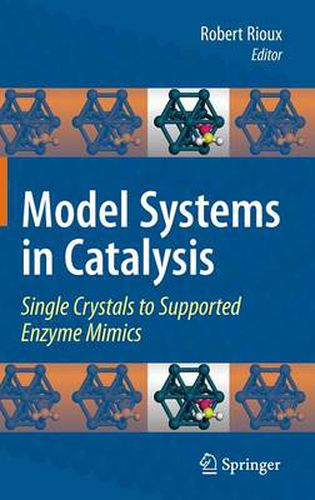Readings Newsletter
Become a Readings Member to make your shopping experience even easier.
Sign in or sign up for free!
You’re not far away from qualifying for FREE standard shipping within Australia
You’ve qualified for FREE standard shipping within Australia
The cart is loading…






This title is printed to order. This book may have been self-published. If so, we cannot guarantee the quality of the content. In the main most books will have gone through the editing process however some may not. We therefore suggest that you be aware of this before ordering this book. If in doubt check either the author or publisher’s details as we are unable to accept any returns unless they are faulty. Please contact us if you have any questions.
This book is an excellent compilation of cutting-edge research in heterogeneous catalysis and related disciplines - surface science, organometallic catalysis, and enzymatic catalysis. In 23 chapters by noted experts, the volume demonstrates varied approaches using model systems and their successes in understanding aspects of heterogeneous catalysis, both metal- and metal oxide-based catalysis in extended single crystal and nanostructured catalytic materials. To truly appreciate the astounding advances of modern heterogeneous catalysis, let us first consider the subject from a historical perspective. Heterogeneous catalysis had its beginnings in England and France with the work of scientists such as Humphrey Davy (1778-1829), Michael Faraday (1791-1867), and Paul Sabatier (1854-1941). Sabatier postulated that surface compounds, si- lar to those familiar in bulk to chemists, were the intermediate species leading to catalytic products. Sabatier proposed, for example, that NiH moieties on a Ni sur- 2 face were able to hydrogenate ethylene, whereas NiH was not. In the USA, Irving Langmuir concluded just the opposite, namely, that chemisorbed surface species are chemically bound to surfaces and are unlike known molecules. These chemisorbed species were the active participants in catalysis. The equilibrium between gas-phase molecules and adsorbed chemisorbed species (yielding an adsorption isotherm) produced a monolayer by simple site-filling kinetics.
$9.00 standard shipping within Australia
FREE standard shipping within Australia for orders over $100.00
Express & International shipping calculated at checkout
This title is printed to order. This book may have been self-published. If so, we cannot guarantee the quality of the content. In the main most books will have gone through the editing process however some may not. We therefore suggest that you be aware of this before ordering this book. If in doubt check either the author or publisher’s details as we are unable to accept any returns unless they are faulty. Please contact us if you have any questions.
This book is an excellent compilation of cutting-edge research in heterogeneous catalysis and related disciplines - surface science, organometallic catalysis, and enzymatic catalysis. In 23 chapters by noted experts, the volume demonstrates varied approaches using model systems and their successes in understanding aspects of heterogeneous catalysis, both metal- and metal oxide-based catalysis in extended single crystal and nanostructured catalytic materials. To truly appreciate the astounding advances of modern heterogeneous catalysis, let us first consider the subject from a historical perspective. Heterogeneous catalysis had its beginnings in England and France with the work of scientists such as Humphrey Davy (1778-1829), Michael Faraday (1791-1867), and Paul Sabatier (1854-1941). Sabatier postulated that surface compounds, si- lar to those familiar in bulk to chemists, were the intermediate species leading to catalytic products. Sabatier proposed, for example, that NiH moieties on a Ni sur- 2 face were able to hydrogenate ethylene, whereas NiH was not. In the USA, Irving Langmuir concluded just the opposite, namely, that chemisorbed surface species are chemically bound to surfaces and are unlike known molecules. These chemisorbed species were the active participants in catalysis. The equilibrium between gas-phase molecules and adsorbed chemisorbed species (yielding an adsorption isotherm) produced a monolayer by simple site-filling kinetics.